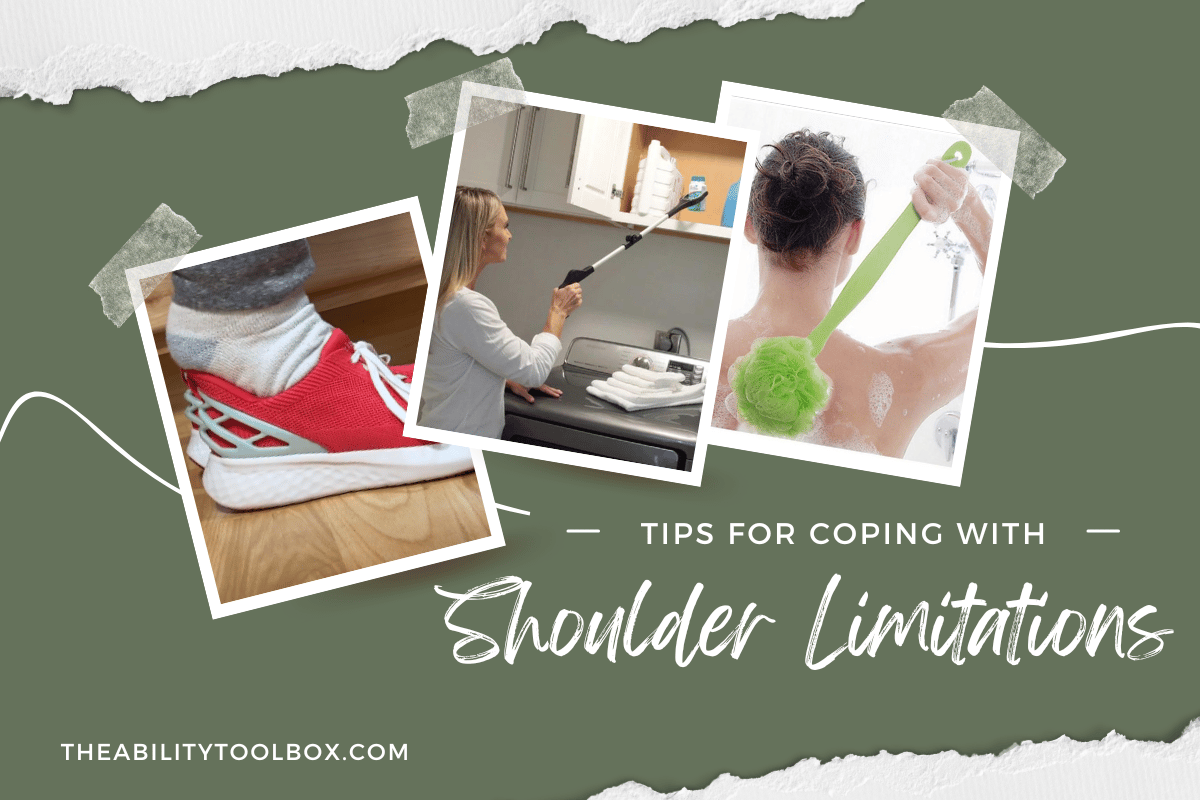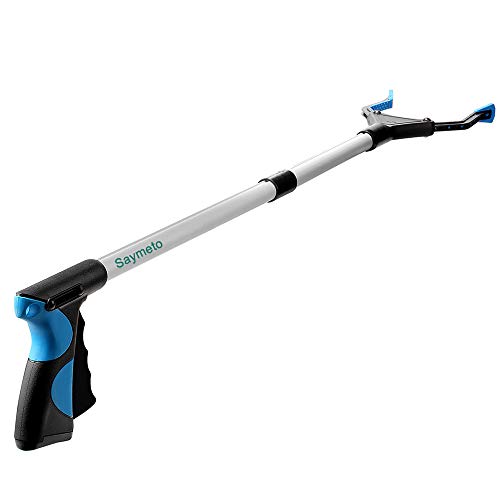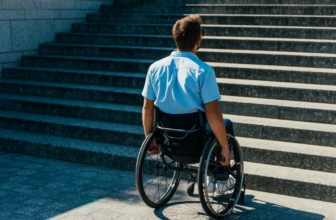I have been thinking lately about how far I have come in six years of living with shoulder limitations. Six years ago, I had just stepped down from the full-time workforce, where I had used my Rehabilitation Counseling training to assist college students with disabilities. I was busy caring for aging parents and trying to find a flexible way of earning some money part-time.
THEN, I fell and broke my right shoulder. After a hard recovery and lots of physical therapy, I was left with restricted reach and weakness in my dominant arm, as well as chronic pain. I pretty quickly learned to do more things with my left hand, and occasionally needed to ask for help. But I didn’t think of myself as disabled.
That is, not until three years later when I fell again as someone came up behind me and ripped my laptop bag off my shoulder. My first thought when I hit the ground and felt pain in my left shoulder was: “There goes my good shoulder. I’m really in trouble now.”
Since then, I have worked with both physical and occupational therapists, and probably recovered as much functioning as I am going to get. Pain, restricted reach, and weight limitations in two shoulders is much more disabling than just one. Thus started my journey of being a person with a disability and learning to cope. I’ve learned a lot.
Here are some of my coping strategies and tools for living with shoulder limitations.
Pacing to Manage Shoulder Limitations
As a rehabilitation counselor, I very often discussed the importance of learning to pace oneself. It actually was one of my favorite strategies to discuss with students. I still firmly believe that pacing myself is essential in becoming as functional as possible and minimizing my pain. However, the fact that I had such a firm grasp on the importance made it no easier to learn to pace myself. I had no idea how hard it is to actually figure out the right level of activity. I didn’t feel like I was overdoing it at the time! It was only afterward that I would find myself hurting more and realize I had done too much. Learning that it wasn’t always a matter of whether I can do something, but whether I should do it right now was a revelation. I have a category I call “things I can do but will pay for.” Finding that balance between doing and resting is a difficult process of trial and error. But it brings great rewards in the end.
Asking for Help with Things I Can't Do Because of Chronic Pain and Range of Motion Loss
Probably many of you can relate to the difficulty of asking for help when you are used to being the helper. But out of necessity, I have learned. I use my grocery store’s pickup service. (No matter how short my grocery list, there is almost always something too high for me to reach.) I regularly pay for manicures, because I can’t reach my feet. My neighbor wheels my full trash bins uphill to the curb every week. (Empty bins downhill I do myself.) I contacted my Area Agency on Aging about their Caring Companions program, and was matched with a volunteer. I get frequent visits from out-of-town family, who always come expecting to help me. I keep a list of things I want help with the next time I see my family or volunteer. I think carefully about those “things I can do but will pay for” in deciding whether they can wait, or I will do them and then allow myself rest. I typically call my volunteer to schedule a help session when there is something urgent I absolutely cannot do myself, and then we take care of the rest of my list. With help, I am doing what needs to be done.
Tools for Coping with Shoulder Limitations
I left in-patient rehab with several tools from my Occupational Therapist:
Although we had practiced showering in rehab, I found it more difficult than expected once I got home. I just couldn’t quite reach one corner of my hair, so I found a hair scrubber with a handle online. I also buy a bath scrub or loofah on the longest stick I can find.
My favorite tool is my bidet. I wouldn’t say it was essential. I have my wiping tool, and with some effort and discomfort, I can reach without it. But it is wonderful to be able to take care of business without an uncomfortable reminder of my shoulder limitations. It was a splurge, but so worth it!
When You Can't Do Something Because of Your Shoulders, Try Another Way
This is where my rehab counseling background really helped me. I was immediately in the mindset of being flexible and looking for other ways to do things. It started in rehab, learning to move my bedside table with my feet. Monkey tricks! I hook my feet under the coffee table to get up from the couch without pushing up on my shoulders. I use a pump lotion bottle to squirt in the direction of my dry feet, and then rub the two feet together to spread it around. As much as possible, I wear shoes I can get into without using my hands (I love my Kiziks). When I need to carry something bulky down the stairs, I go backward and lift it from step to step. I rearranged my kitchen (and got rid of unnecessary items) so that I do not need to use the top shelves.
As I said at the beginning, I have come a long way. As I wrote this article, I was overwhelmed with how many special tools I needed. That quickly turned to gratitude. With those tools and the strategies discussed, I am able to live by myself! A long way indeed.
Do you have limited use of your shoulders? What helps you?
Let us know in the comments.



















